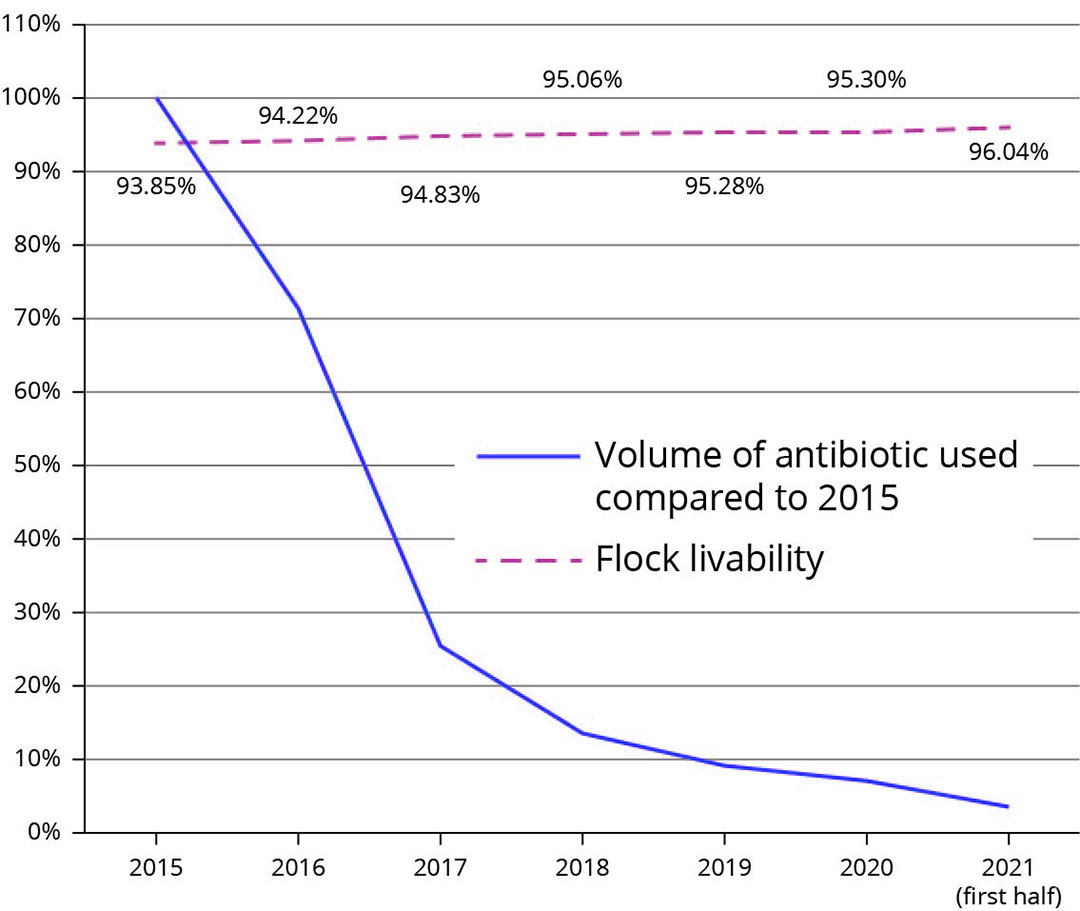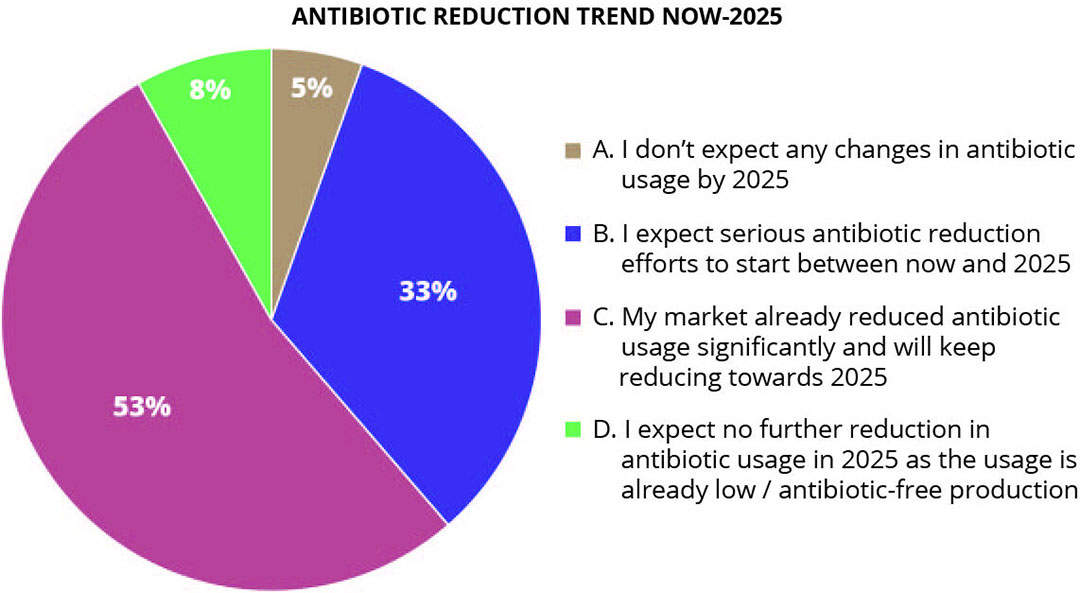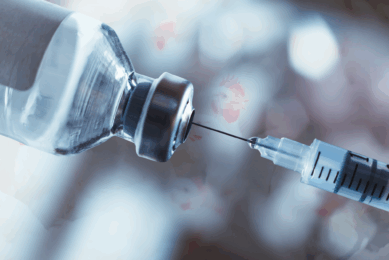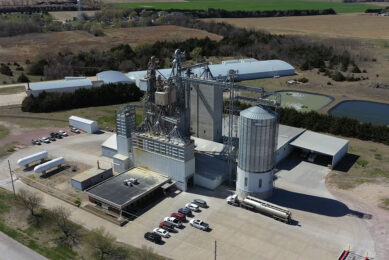Will antibiotic reduction lead to higher mortality?

Surprisingly, average mortality usually declines when antibiotics are reduced with care. Implementation of thoughtful strategies declines in the efficacy of antibiotics, and improving production standards may explain why.
While it is impossible to predict the future, insights gleaned from countless antibiotic reduction projects conducted by Trouw Nutrition and Skretting over the past decade, show it is possible to reduce antibiotics in livestock production without increasing mortality (Figure 1). This article will look at factors that can make or break success when reducing antibiotics.
Figure 1 – The antibiotic reduction journey of Spanish poultry integrator Grupo SADA.

Tailor-made approaches
The trend of reducing antibiotics in livestock production is gaining momentum around the globe. While some producers are just beginning the transition, others have well-established models of reducing or even eliminating antibiotics. A survey conducted at a recent Trouw Nutrition poultry industry event revealed most countries have already started to reduce antibiotic usage in livestock production and will continue to do so in the future (Figure 2). The challenge of reducing antibiotics varies significantly between continents, countries, businesses and even production operations within the same company. The diversity of production climates, regulations and market/trade dynamics mean a one-size-fits-all approach is not realistic. A common denominator of successful antibiotic reduction initiatives is a tailor-made approach. As these tailored approaches have been introduced on farms around the world some distinguishing common elements of success have often been observed. These common aspects may hold the answer as to why mortality often decreases when antibiotics are reduced.
Figure 2 – Survey question in global Trouw Nutrition poultry event held in September 2021. Responses from industry specialists from over 30 different countries.

Piloting, planning and preparation
Sufficient time and resources are essential keys to success when reducing antibiotics. Various issues associated with production efficiency (such as higher average mortality) have been observed when producers are surprised with antibiotic reduction demands. For example, retailers’ demands for animals raised without antibiotics, new export requirements and legislation restricting the use of antibiotics can all catch producers off guard and leave them with little time to implement alternative production strategies. Here’s where some experience piloting antibiotic reduction strategies can help. Acquiring some small-scale experience producing livestock with limited or no antibiotics often turns out to be a valuable advantage in rolling out an operation-wide antibiotic reduction programme.
A second important factor involves preparation. Before accelerating antibiotic reduction efforts or removing them entirely from an operation, relevant risk factors connected to antibiotic use must be uncovered. Raw material quality, feed formulation, endemic animal diseases and various aspects of farm management are often relevant when looking for risk factors. As some of these potential risks are disguised by antibiotic usage, seeking an external farm audit is very helpful in identifying risks that might otherwise be hidden.
Once risk factors have been identified, staff training will prepare everyone for the upcoming changes and equip farm managers to manage challenges previously covered with antibiotics. For example, farm workers could be trained in learning how to identify and respond properly to the earliest signs of a disruption in gut health.
Thoughtful preparation should inform a realistic and affordable plan for reducing antibiotics with identified and acceptable risks.
Antibiotic reduction: One step at a time!
Incremental change yields the best results when transitioning away from antibiotics. A step-by-step approach to antibiotic reduction allows farms to take an action, evaluate, improve, and progress. In practice this approach could translate to an operation removing 1 or 2 in-feed antibiotics as an initial step, while working on the specified risk factors to cover for the absence of that antibiotic. These risks might be the improvement of certain management procedures, strategic use of functional feed additives, improved health monitoring or leveraging the benefits of specialised young animal feeds. When evaluation reveals the removal of the antibiotic is covered effectively, the producer could move on to the next antibiotic challenge.
A “one step at a time strategy” creates awareness and introduces alternative solutions to risk factors previously managed with antibiotics. By exploiting newly gained insights and rolling out small incremental steps to address risk factors, the effect on performance often surpasses the previous antibiotic-supported way of production.
Another factor contributing to good production results when removing antibiotics lies in the relative effect preventively used antibiotics have in modern production systems. The production efficiency advantages of antibiotic growth promoters (AGPs) show a clear downward trend over the last decennia. An analysis of 433 piglet experiments conducted between 1950 and 1985 revealed a +16.4% average daily gain advantage and +6.9% improved feed conversion rate through usage of AGPs. However, a large study performed in 2002 revealed only a 5% increased average daily gain advantage with AGPs and a not statistically significant minor effect on the feed conversion ratio of piglets. The same trend is also visible in broilers and grower-finishing pigs. In context with continuously improving and evolving production standards, some producers are no longer dependent on antibiotics without realising it.
Nutreco Sustainability RoadMap 2025
One step at a time also applies to Nutreco’s own ambitious antibiotic reduction effort for Trouw Nutrition and Skretting, to contribute towards lowering antimicrobial resistance (AMR).
Referred to as RoadMap 2025, by year-end 2025, these goals include the following for products supplied by Nutreco:
- Zero prophylactic antibiotics
- Zero antibiotics used as growth promoters
- Zero antibiotics labelled by WHO as ‘critically important for human health’
- Antibiotics only after a valid clinical diagnosis and under supervision of a veterinarian
These commitments are to date the most ambitious antibiotic reduction goals published by any global animal nutrition company. While they will not be reached this year, nor in 2022, the solutions to replace antibiotics in the above categories are already well established for some common industry challenges.
Visit Nutreco to find out more about RoadMap 2025 – Learn more about RoadMap 2025
Authors:
Melchior de Bruin and Barbara Brutsaert, Global Programme Managers Poultry Health, Trouw Nutrition







